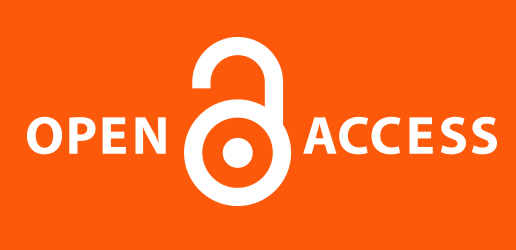Kejayaan Rempah Dari Pulau Kei Raha: Pandangan Etnohistori
Abstract
This study discusses the lives of local people who are tied to the historical memory of biological wealth in the Maluku Islands. The world's dependence on spices since pre-colonial times has created many events. Not a few conflicts and cultural mobility that occurred when the spice was at its peak. The wealth of spices in Maluku has opened the world's eyes to other aspects in Indonesia such as social, cultural, political and other natural products. Mareku Village, which is located on Tidore Island, is one of the areas that is very involved in the historical record of the arrival of Europeans to the Maluku Islands in search of spices. This paper will present ideas and ideas about the past of the people in Mareku Village which have been reconstructed into culture through memory about their historical historical values. In more detailed conceptual terms, it is called ethnohistory. The attitudes of solidarity, tolerance, nationalism, traditional values of the sultanate, and devout Islam that are currently displayed cannot be separated from the historical values of spices that occurred in their land. Because whatever historical events that have occurred in their area is very strongly related to the existence of abundant spice commodities. Through historical relics that are still preserved today, the people of Mareku have believed this as the basis for their current attitudes and behavior
References
Amir, N., & Saifuddin. (2017). Developing a measurement tool of the effectiveness of the physical education teachers’ teaching and learning process. Journal of Physical Education and Sport, 17(1), 127-134. Retrieved from http://efsupit.ro/images/stories/01feb2017/art%2020.pdf
Maulana, R., Irwan, I., Hanum, M. C., Mujiburrahman, M., & Lidiana, L. (2022). The effectiveness of TOEFL app for final-year students of Marine and Fisheries Faculty Universitas Syiah Kuala, Indonesia. E3S Web of Conferences, 339, 1-4. Retrieved from https://www.e3s-conferences.org/articles/e3sconf/abs/2022/06/e3sconf_10icmr-2insaef2022_06005/e3sconf_10icmr-2insaef2022_06005.html
Amir, N., Saifuddin, S., Muhammad, M., & Maulana, R. (2022). An analysis of lighting design in a football stadium. E3S Web of Conferences, 339, 1-5. Retrieved from https://www.e3s-conferences.org/articles/e3sconf/abs/2022/06/e3sconf_10icmr-2insaef2022_06008/e3sconf_10icmr-2insaef2022_06008.html
Maulana, R., Ismi, R. Z., & Lidiana, L. (2020). Rancangan animasi media pembelajaran bahasa Inggris ke Indonesia untuk anak usia dini berbasis Adobe Flash. Jurnal Sains Komputer & Informatika, 4(2), 379-385. Retrieved from https://tunasbangsa.ac.id/ejurnal/index.php/jsakti/article/view/229/211
Amir, N., Saifuddin, S., & Maulana, R. (2021). Modifying the regulations in Geudeu-Geudeu martial art. Annual International Conference on Social Sciences, 11, 270-274. Retrieved from https://jurnal.usk.ac.id/AICS-Social/article/view/24358/15290
Maulana, R., Ma'ruf, D., & Tarmizi. (2020). Model media pembelajaran menggunakan aplikasi blended learning berbasis mobile. Journal Informatic, Education and Management, 2(2), 54-62. Retrieved from https://jurnal.stmikiba.ac.id/index.php/jiem/article/view/27/25
Amir, N., & Saifuddin. (2018). Analysis of body position, angle and force in lawn tennis service accuracy. Journal of Physical Education and Sport, 18(3), 1692-1698. Retrieved from https://efsupit.ro/images/stories/september2018/Art%20247.pdf
Maulana, R., & Bahruni, B. (2020). An Android-based vocabulary model for autism. International Journal of Information System and Technology, 3(2), 221-226. Retrieved from https://ijistech.org/ijistech/index.php/ijistech/article/view/53/53
Amir, N., & Saifuddin. (2017). Developing a measurement tool of the effectiveness of the physical education teachers’ teaching and learning process. Journal of Physical Education and Sport, 17(1), 127-134. Retrieved from http://efsupit.ro/images/stories/01feb2017/art%2020.pdf










